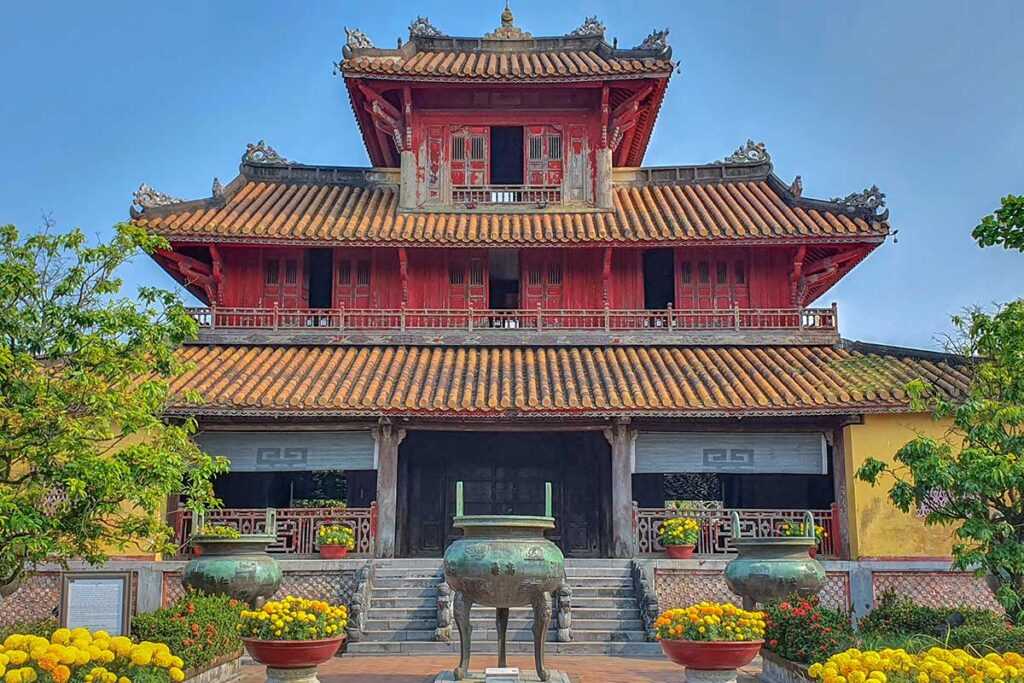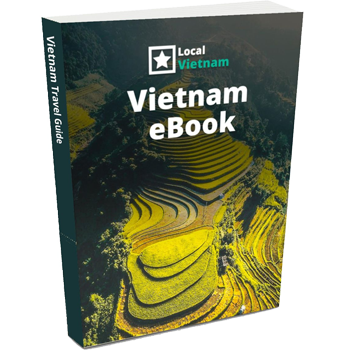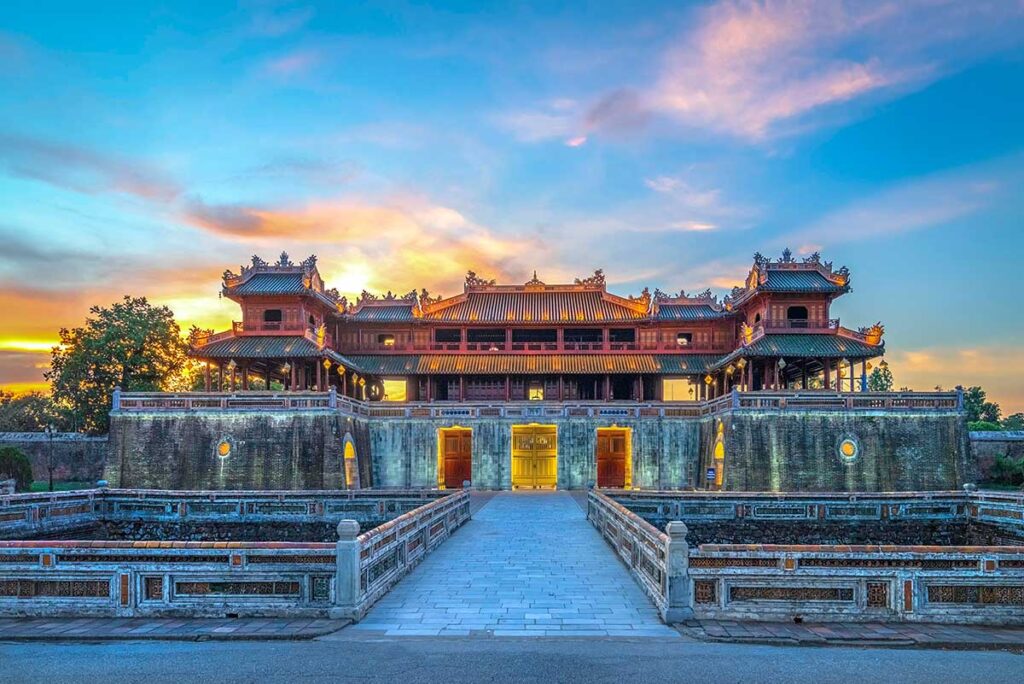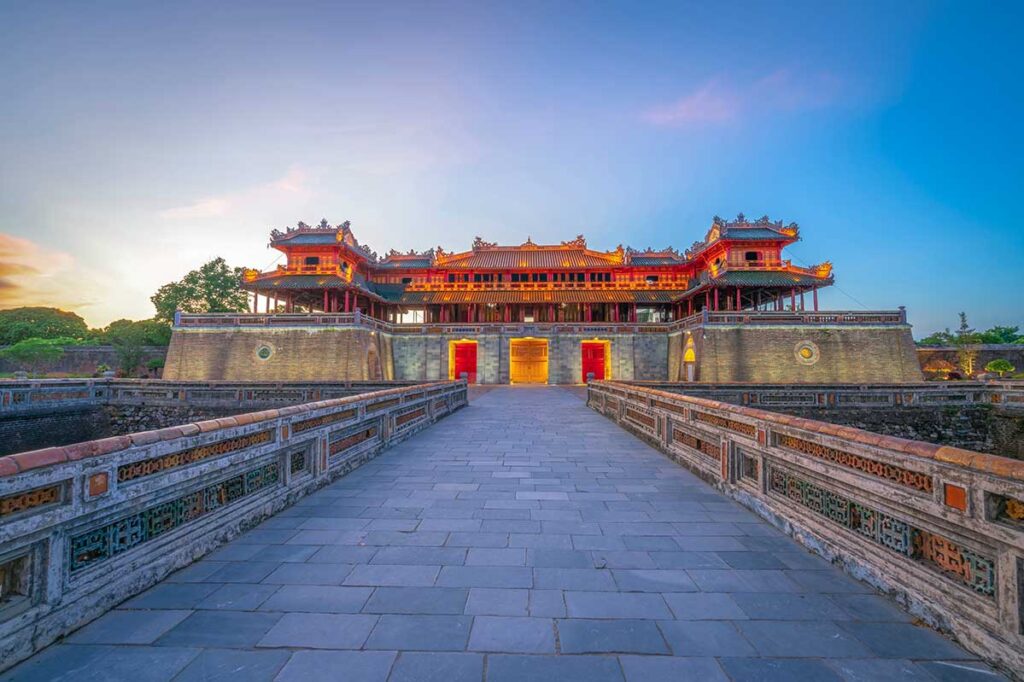What is Hien Lam Pavilion?
Hien Lam Pavilion is a three-storey wooden monument located in the To Mieu Temple Complex, inside Hue’s Imperial City. Completed in 1822, it was built as a memorial to honour the Nguyen emperors and mandarins who contributed to the dynasty’s strength and prosperity. With its symmetrical design, Bat Trang tiled base, and intricate dragon carvings, the pavilion is both an architectural highlight and a symbol of reverence within the former royal capital.
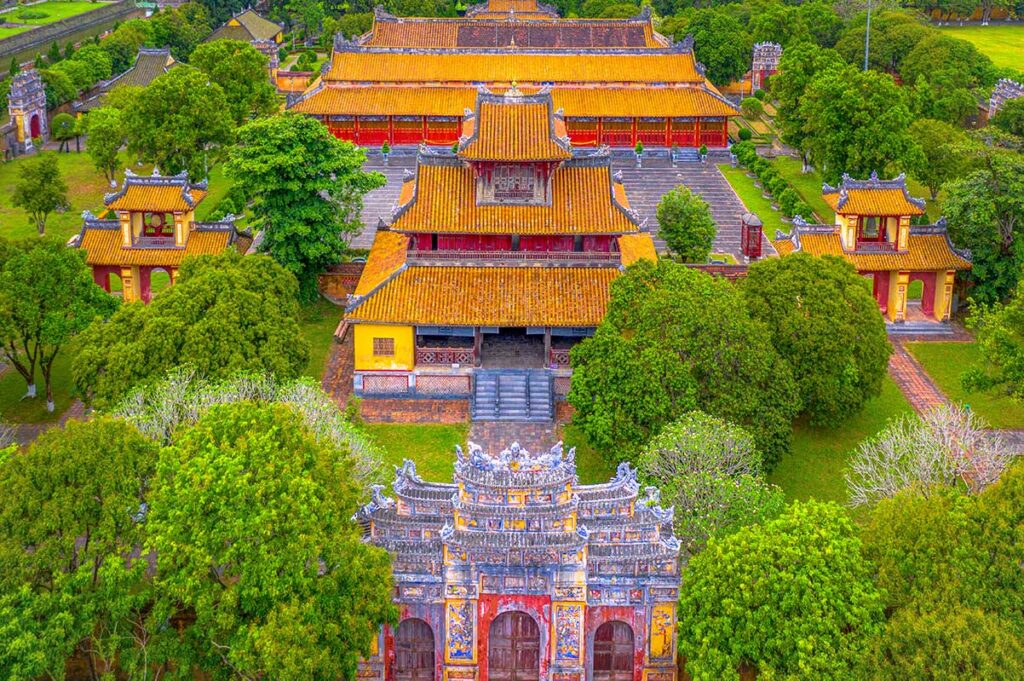
History of Hien Lam Pavilion
Construction & symbolism
Hien Lam Pavilion was commissioned by Emperor Minh Mang in 1821 and completed in 1822, alongside the nearby To Mieu Temple. It was designed as a memorial to honour the Nguyen emperors and senior mandarins who had played a vital role in the dynasty’s rise and governance. At 17 metres tall, it became — and remains — the highest structure in the Imperial City, symbolising the enduring prestige of the royal family. A strict rule was established that no other building within the citadel could surpass its height, reinforcing its status as a central monument of respect.
Role during Nguyen Dynasty
During the Nguyen Dynasty, Hien Lam Pavilion was more than a decorative landmark. Standing directly in front of To Mieu Temple and the Nine Dynastic Urns, it acted as a ceremonial gateway to the ancestral worship area. Its location and stature were intended to inspire reverence, reminding courtiers and visitors of the dynasty’s legitimacy and the achievements of its rulers.
Restorations and preservation
Despite nearly two centuries of exposure to the elements and the impacts of war, much of the pavilion’s structure has survived. It underwent several repairs over time, with the most extensive restoration carried out in 2001 to address weathering and preserve its intricate wooden carvings. Today, Hien Lam Pavilion is one of the best-preserved wooden structures in the Imperial City, continuing to stand as a visual and cultural focal point in the To Mieu Temple Complex.
The layout of the Imperial City & location of Hien Lam Pavilion
To understand where Hien Lam Pavilion sits, it helps to know the basic layout of Hue’s former royal capital:
- Hue Citadel – The vast outer enclosure surrounded by a defensive moat and thick brick walls. This area housed administrative buildings, military facilities, and residential quarters for officials.
- Hue Imperial City – The walled inner area containing royal palaces, temples, and ceremonial halls used by the Nguyen emperors.
- To Mieu Temple Complex – Located in the southern section of the Imperial City, this area is dedicated to ancestor worship, with shrines to past emperors and significant monuments.
Hien Lam Pavilion stands at the heart of the To Mieu Temple Complex, directly in front of To Mieu Temple and facing the Nine Dynastic Urns. Its prominent position makes it a symbolic gateway between the temple and the rest of the complex.
Highlights of visiting Hien Lam Pavilion today
Hien Lam Pavilion remains in excellent condition thanks to careful maintenance and restoration, most notably the major work carried out in 2001. Much of the original wooden structure, carvings, and layout have been preserved, allowing visitors to experience it much as it would have appeared in the Nguyen era.
1. Overall architecture
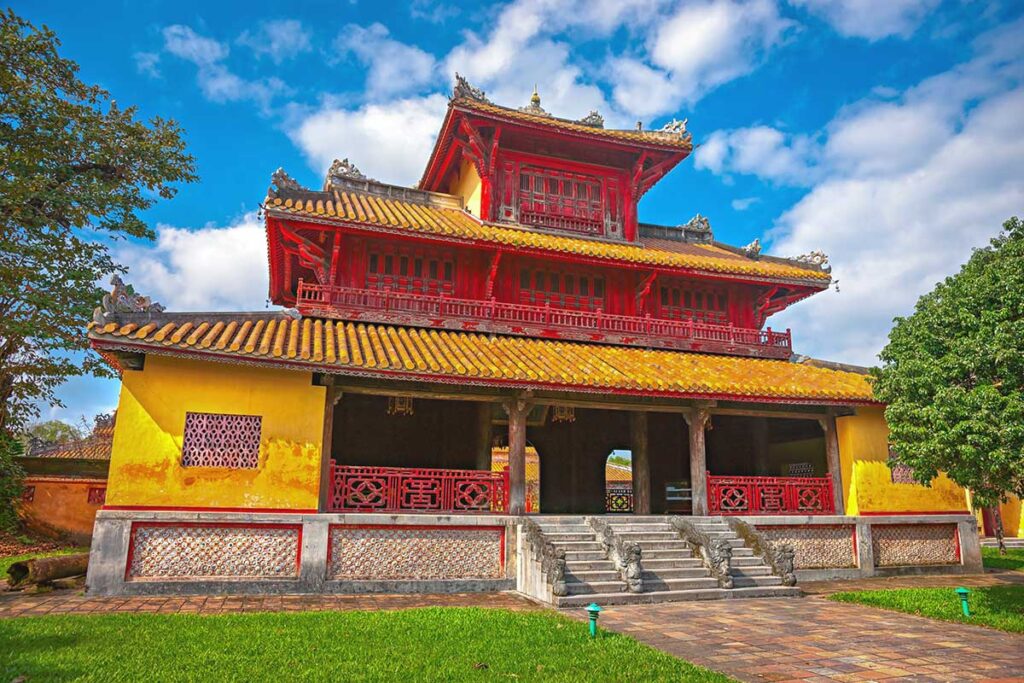
The pavilion is a three-storey wooden structure set on a high rectangular base paved with Bat Trang tiles. Access is via two sets of nine-step staircases, each flanked by dragon reliefs, with the central path historically reserved for the emperor. Its symmetrical design and multiple roof tiers give it a balanced, imposing presence in the complex.
2. First floor details
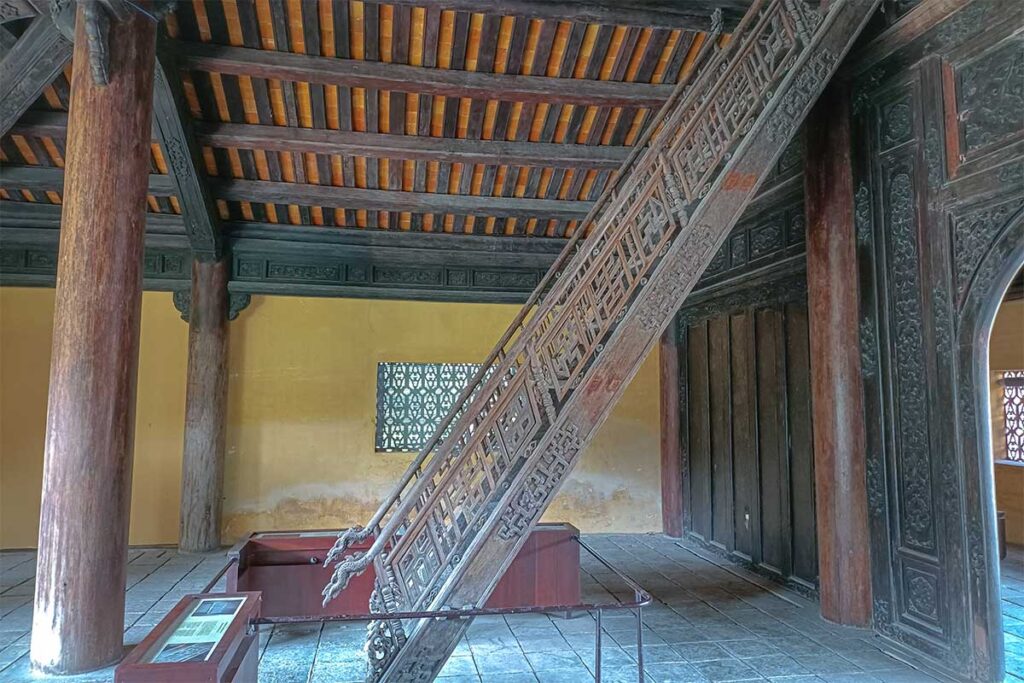
The first floor contains five compartments supported by 24 wooden columns, with intricate carvings of dragons, flowers, and foliage on the beams and panels. At the centre above the main entrance hangs a large lacquered board inscribed “Hiển Lâm Các,” framed by nine gilded dragons playing among clouds.
3. Second floor
Reached by a finely crafted wooden staircase, the second floor has three compartments with front and rear shutter doors. The surrounding balustrades are divided into decorative panels featuring the Chinese characters for “longevity” (壽) and “ten thousand” (萬), along with geometric patterns and dragon motifs at the ends.
6. Third floor
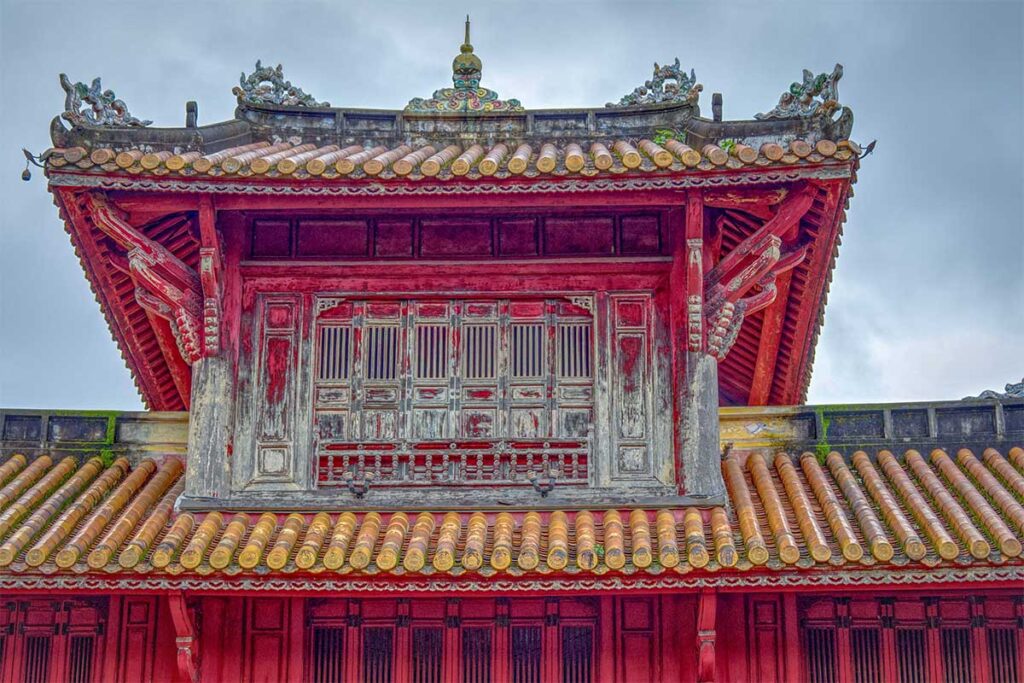
The top level is a single compartment accessed by a short nine-step wooden staircase. Its most distinctive feature is the yellow enamel wine gourd placed atop a five-colour enamel cloud motif, crowning the structure in symbolic splendour.
5. Symbolic height & design rules
At 17 metres, Hien Lam Pavilion is the tallest building in the Imperial City. During the Nguyen Dynasty, a strict regulation ensured no other structure could surpass its height, reinforcing its ceremonial and symbolic importance.
6. Viewpoints & atmosphere
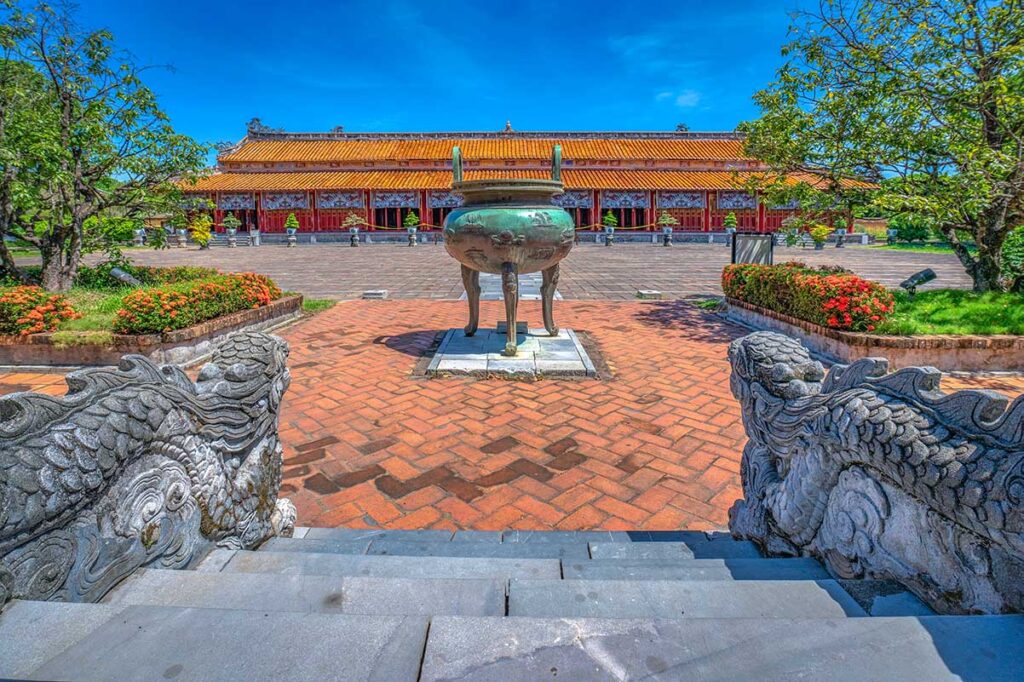
While the pavilion itself is enclosed, its position offers clear views over the courtyard and directly toward the Nine Dynastic Urns. The space around it feels formal yet serene, with its symmetry and craftsmanship standing out among the surrounding imperial architecture.
Visiting tips & what’s nearby
Hien Lam Pavilion is part of the To Mieu Temple Complex within Hue’s Imperial City, so there is no separate ticket — entry is included in the general Imperial City admission.
Tickets & access
Access is covered by the Hue Imperial City ticket, which also allows entry to other major sites within the walls. The Imperial City is generally open from early morning until late afternoon, but check current schedules before visiting.
Tip: Our full-day Hue tour includes the Imperial City, guided commentary, and smooth transfers between key attractions:
Hue Historical City Tour
- Highlights: Hue Imperial City, royal tombs, Perfume River cruise, Dong Ba Market.
- Options: Small-group tour or private tour
Time needed
Allow around 10–15 minutes to view the pavilion itself. To explore the entire Imperial City, plan for at least half a day, more if you want to take your time.
Best time to visit
The morning and late afternoon offer softer lighting for photography and more comfortable temperatures, especially in the hotter months.
Nearby sights
Within a short walk you can visit To Mieu Temple, the Nine Dynastic Urns, Thai Binh Pavilion, the Royal Theatre, and Kien Trung Palace — all located inside the Imperial City.
Practical advice
Dress modestly out of respect for the historical and spiritual nature of the site. Avoid touching the wooden carvings to help preserve them, and be prepared to wait briefly if large tour groups are moving through the area.
